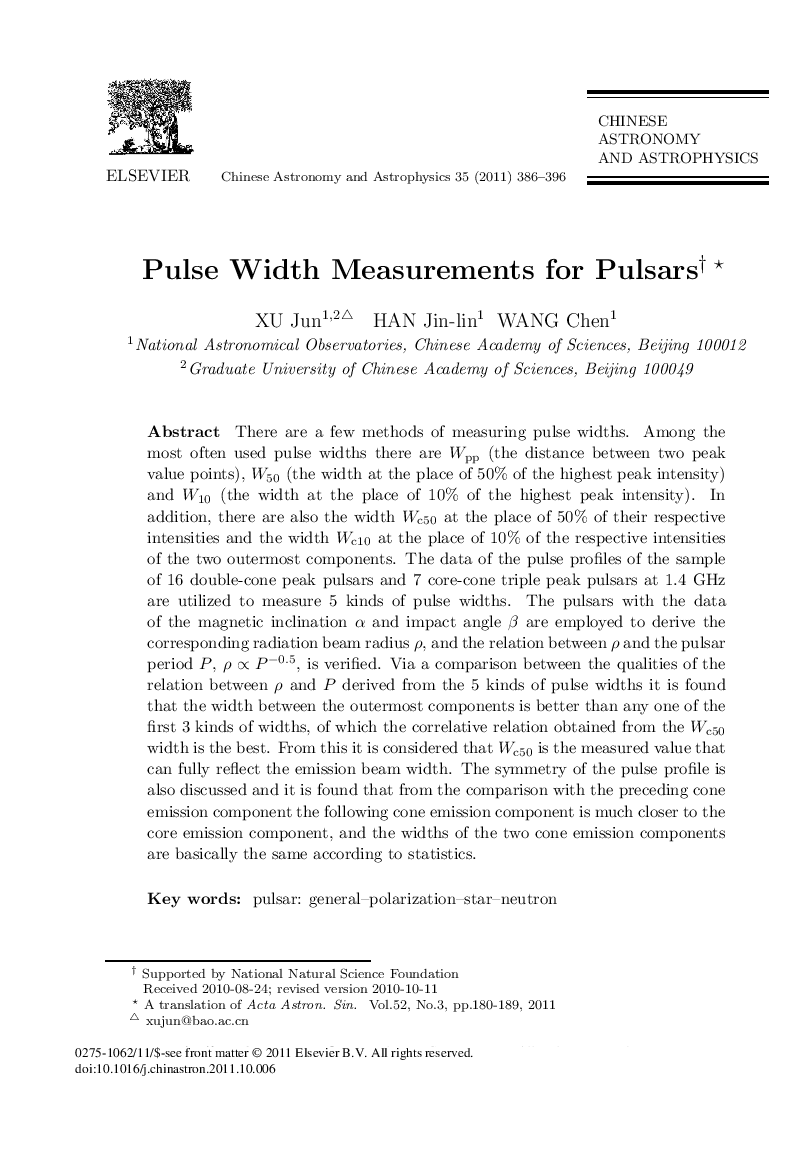| Article ID | Journal | Published Year | Pages | File Type |
|---|---|---|---|---|
| 1771806 | Chinese Astronomy and Astrophysics | 2011 | 11 Pages |
There are a few methods of measuring pulse widths. Among the most often used pulse widths there are Wpp (the distance between two peak value points), W50 (the width at the place of 50% of the highest peak intensity) and W10 (the width at the place of 10% of the highest peak intensity). In addition, there are also the width Wc50 at the place of 50% of their respective intensities and the width Wc10 at the place of 10% of the respective intensities of the two outermost components. The data of the pulse profiles of the sample of 16 double-cone peak pulsars and 7 core-cone triple peak pulsars at 1.4 GHz are utilized to measure 5 kinds of pulse widths. The pulsars with the data of the magnetic inclination α and impact angle β are employed to derive the corresponding radiation beam radius ρ, and the relation between ρ and the pulsar period P, ρ ∝ P−0.5, is verified. Via a comparison between the qualities of the relation between ρ and P derived from the 5 kinds of pulse widths it is found that the width between the outermost components is better than any one of the first 3 kinds of widths, of which the correlative relation obtained from the Wc50 width is the best. From this it is considered that Wc50 is the measured value that can fully reflect the emission beam width. The symmetry of the pulse profile is also discussed and it is found that from the comparison with the preceding cone emission component the following cone emission component is much closer to the core emission component, and the widths of the two cone emission components are basically the same according to statistics.
